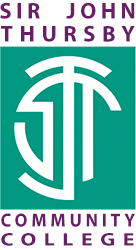Topic 1 Year 7 Music
| Music | |||
| Topic | Music Intro | ||
| No of lessons | 7-8 | ||
| When is it happening | Term 1 Year 7 | ||
| What will students learn | Week by week students will explore the formal elements of Music. These formal elements are pitch, duration, timbre, tempo, dynamics, texture, structure. Students will also explore musical notation in relation to the elements of music. These elements will enable the students to participate in music performance, composition and listening, to facilitate the students' musical education. | ||
| Key Knowledge that students should know at the end of 'Topic' | This is the knowledge that students will meet for the first time in this topic | The knowledge of using musical notation to enable the students to perform a piece of music by reading. They will learn how to use the musical equipment safely and learn practice techniques which enable students to progress quickly and make them successful in learning pieces. They will learn how to perform Chines music from notation, add a drone and/or ostinato and learn how to perform within an ensemble with awareness of those in their group. Not all students will have had access to specialist music equipment and teaching at KS2 so the opportunity for all students to learn this knowledge of formal elements and how to use the associated equipment is key to ensure all students can succeed. They will learn how to combine layers of sound as performers and composers. | |
| This is knowledge that students may have met before but will need to deepen their understanding | Students will have an understanding of performing in unison but may have had limited opportunities to develop their musical skills or the understanding of how to develop those skills. They may know certain words such as rhythm, beat and tempo, but may not know how to use these words correctly or use the elements to describe music. Students will have basic knowledge of instrumentation with a basic awareness of some instruments like flute, violin, trumpet and drums but may not be able to distinguish instruments when listening to them in an ensemble setting. They will have an understanding of when music sounds 'correct' but may not know why it is so. | ||
| Key Skills that students should be able to demonstrate at the end of 'Topic' | This is the skills that students will meet for the first time in this topic | To have a clear understanding of how to use different aspects of notation successfully to create different musical pieces. Students will create layers of sound successfully and explore aspects of improvisation, composition using rhythmic notation as a template. Students will develop skills to listen to themselves and their peers with constructive criticism and also how to listen objectively, and to be able to describe music using the correct vocabulary | |
| This is skills that students may have met before but will need to develop | Students will have a deeper understanding of how music is constructed of different layers and will be able to recognise them when listening. Student will explore rehearsal techniques to ensure that they can progress all the way through key stage 3 and 4 | ||
| Key vocabulary that students should know and understand |
Pulse, beat, rhythm, crotchet, quaver, semiquaver, unison, drone, ostinato Pitch, tempo, duration, timbre, texture, structure, improvisation, dynamics, timing |
||
| The Big Question | What are the Elements of Music? | ||
|
Key questions that students should be able to answer at the end of the 'Topic' |
What is musical notation and how/why do we use it to perform? | ||
| What is texture in music and can we use it to develop our Chinese music? | |||
| What are rehearsal techniques and how can we use them to improve our work? | |||
| What are the elements of Indian music? | |||
| How can we develop our raga and tala in Indian music? | |||
| What is structure in music? How can we use it to develop our Indian music piece? | |||
| How can we use notation to show our Indian music piece? | |||
|
How can we use notation to show pitch? |
|||
